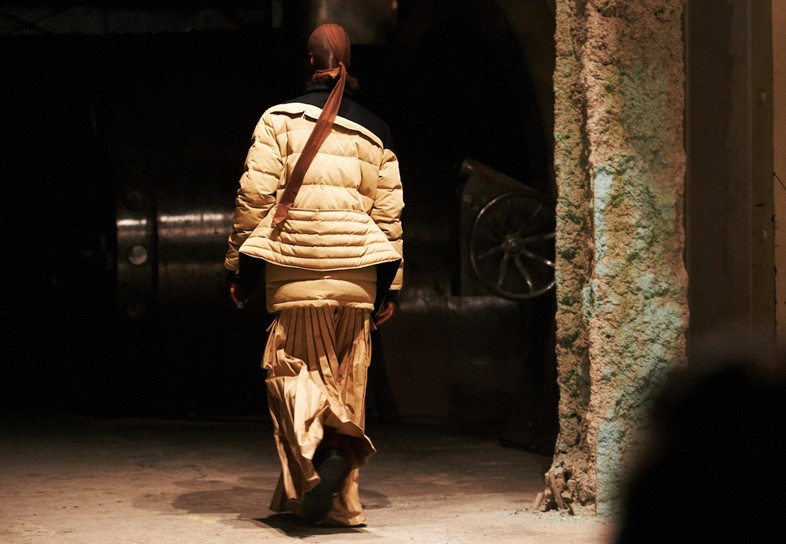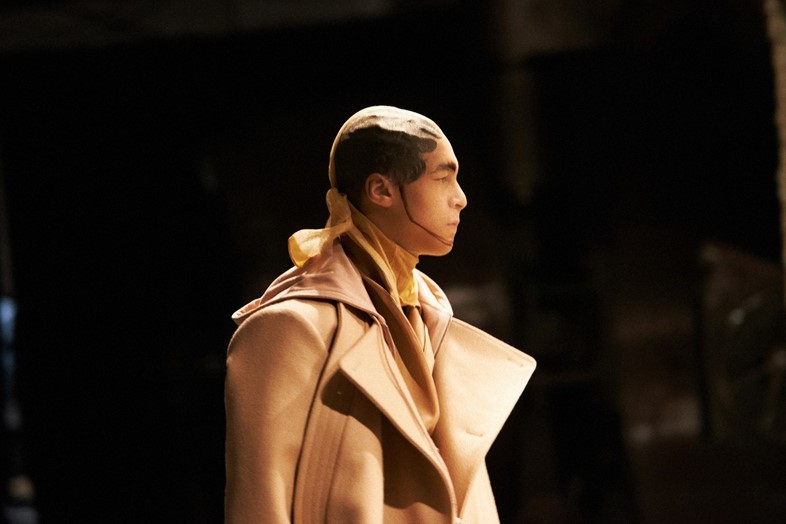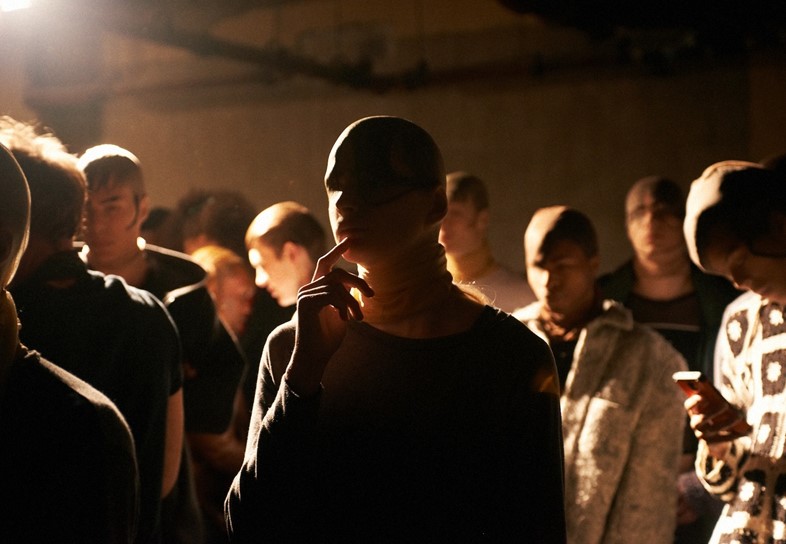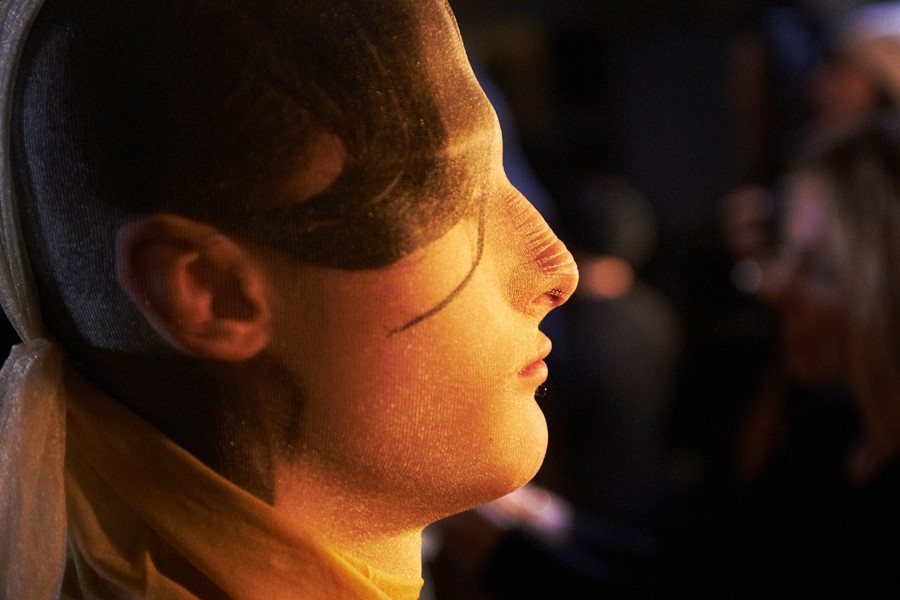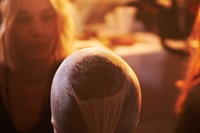Sang Bleu's Reba Maybury and show stylist Akeem Smith discuss hosiery fetishism and the Hood By Air runway, accompanied by Sam Nixon's images for AnOther
There was something wonderfully and terrifyingly unnerving about this season's Hood By Air show. The faces of the models were trapped within hosiery, their features contorted and blurred. Their mouths were gated and secured with signature HBA padlocks. Their arms were sometimes strapped down by their sides, their legs wrapped in cords. Entitled 'Daddy,' there was a clear message of fetish-style restriction going on, so we asked Reba Maybury, editor at Sang Bleu, and Akeem Smith, who has been Hood By Air's stylist since 2008, what the show meant to them.
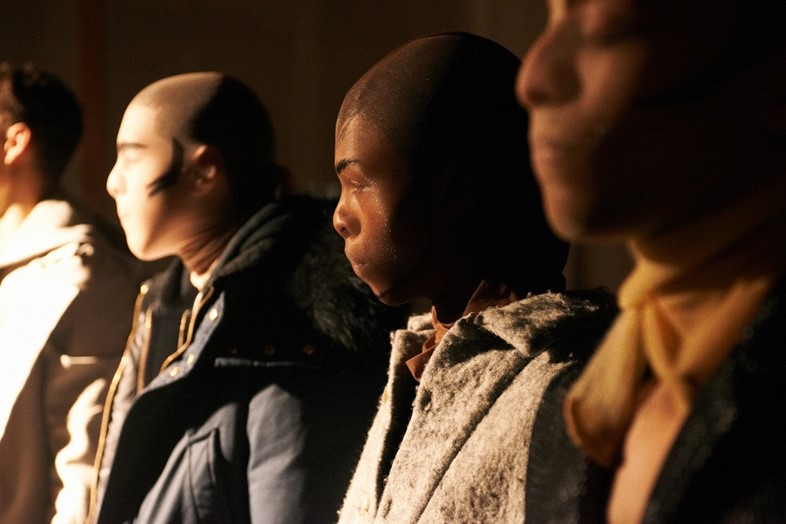
What first interested you about Hood By Air?
AS: What attracted me to the brand was the authenticity of it, from the narrative of the clothes to Shayne and Raul actually wearing the looks to the club, and Shayne's overall mission for the brand.
RM: For me, it was because they are creating something inherently positive; they are all-welcoming, kind and visionary, pulling down the capitalist boundaries of structures that affect minorities. For A/W15, HBA did what they do best; they created a supremely optimistic vision of humanity which understands no boundaries of race, class or gender.
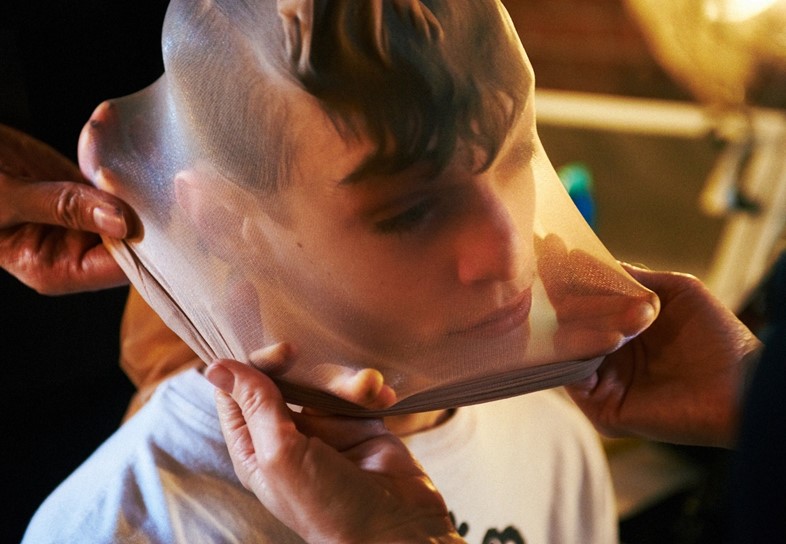
Reba, you recently wrote on Sarka Encasement, whose fetish is covering her body in hosiery... did you see a correlation between that and the collection?
RM: Well, Sarka encasing her body has the intention of enticing sexual arousal. It makes her look like a play thing, but it also hides her personality, so the viewer is presented with the idea of a woman devoid of identity. At the HBA show, that concealment of identity gave a chilling association with criminality – but using tights in that way also does something very interesting to the face; it squashes it, makes it ugly. We don't expect ugliness in fashion, but HBA relish in it and create an identity, a positive personality for the world rather than a dependency to fit into something boringly capitalistic.
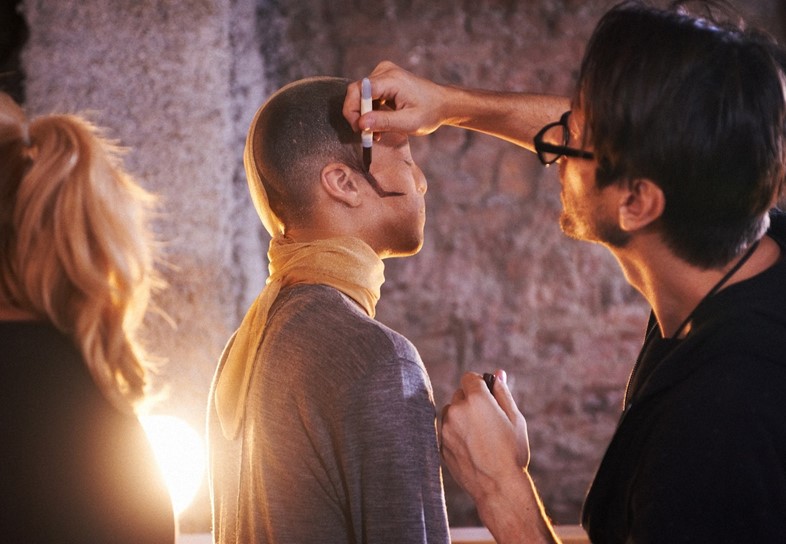
AS: The hosiery was a mask, rooted a little bit in being ambiguous like a criminal and creating an intimidating feeling. There's something beautiful about that. But we also wanted to create a HBA FACE, hence adding facial features on to the tights; it came from a place of surgical beauty, the mannequin's faces looked sort of altered. It was a way of saying, "This is your new face".

What about the padlocks?
AS: The padlock was another a play on the prison and criminal influences.
RM: It hints at security on some levels but also even ideas of possession, maybe even slavery. Padlocks capture suggestions of sadism or masochism but they simultaneously looks like any other normal household object, in the same way that once a safety pin was as banal as a door handle but it's now hard for us to imagine it without the connotation of punk. Over the last few years, protest has been a constant happening in our global society, a reaction against the way capitalism is attacking us. We all feel so locked in to our ways of life, that the big consumerist and government powers above us will have the final say, and I suppose that this is exactly what the padlocks were about to me.
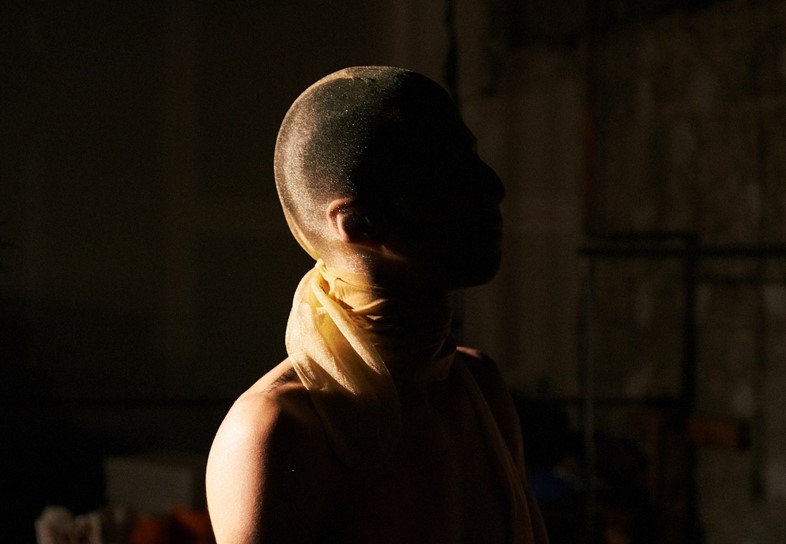
What did the show mean to you?
RM: To me, the show was about transcending the physical aspects of ourselves that unfortunately divide us.
Akeem, what about the styling?
It was what would I wear after drinking four Makers Mark with Ginger Ale.
